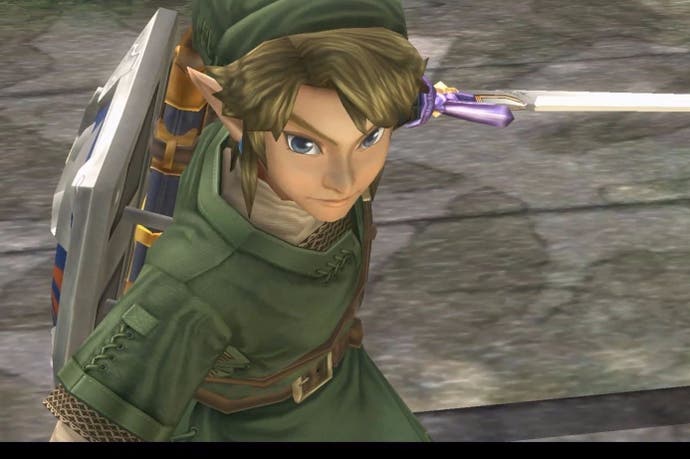Face-Off: The Legend of Zelda: Twilight Princess HD
How the Wii U version stacks up against the originals - with some surprising results.
Developer Tantalus hits all the right notes in its Zelda: Twilight Princess HD remaster on Wii U: a full-blooded 1080p production with overhauled textures, boosted shadow quality, and tweaked bloom lighting. As a visual upgrade it's a satisfying one - and marks Zelda's 30th anniversary with some style. We've drawn comparisons with the Wii version already, but bringing the GameCube version into the fold lets us see the full extent of the upgrade across three generations of Nintendo consoles.
Of course, visual differences between GameCube and Wii are notoriously few, and both 2006 releases match up very closely indeed when planted next to this Wii U remaster. Even as the technological midpoint of the three, Wii's extras are fairly meagre in hindsight - the same texture assets, effects and geometry as GameCube, all presented at the same 480p standard. Adding a new widescreen mode (and an entirely inverted world layout) distinguished it to a certain extent, but otherwise these two were very much on par. With motion controls added, its status as a Wii launch title overshadowed the other version, and sadly, fewer people enjoyed the game in its original GameCube orientation.
This all changes for the Wii U release. Twilight Princess HD defaults to the non-mirrored layout intended for the game, while a harder Hero mode offers the Wii's inverted look. It's all output at a native 1080p too, but the benefits of finally running the game at a 24-bit colour depth can't be overstated. All captures below are taken via the Wii U's HDMI port, where the 16-bit colour on GameCube and Wii versions still cause a visible 'pinstripe' artifact across the output. This dithering is common to games of this era using heavy alpha effects - and thankfully it's a thing of the past on Wii U.
Visually it's a much sharper, richer looking game. No stone is left unturned in the overhauling of textures, and even character hair is remapped with a brand new asset - while shadow resolution is boosted too. Even the bloom effect is intensified for some cut-scenes, just like the Zelda: Wind Waker HD project on Wii U. Alas, geometry is left as-is from ten years ago, meaning we get the same rudimentary character designs and terrain dimensions, at times looking a little primitive for a 2016 release.
However on balance it's surprising how well the game holds up, and certain efforts are made to embellish the world - if only as a small gesture. For example, scenery is retouched in places like Ordon Village, and new trees are added to fill out its barren hillsides. Otherwise Nintendo's original location designs return as-is, and we've yet to spot other terrain tweaks in spots like Kakariko Village.
It's all progress on Wii U then, except for one small sticking point. Moving to 1920x1080 has not come entirely without a penalty, and Twilight Princess HD has frame-rate dips not seen on GameCube and Wii. All three Nintendo consoles push for a near perfect 30fps, notably even in the taxing Hyrule field area. It's a solid turnout on GameCube in particular, where draw distances were always broad, and yet the 15-year-old machine still ticks over at a consistent 30fps here.

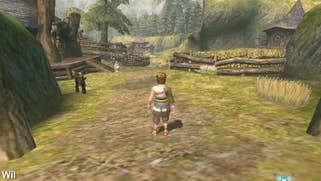
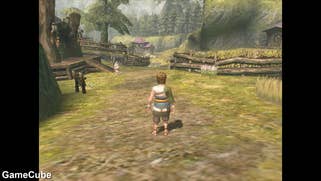
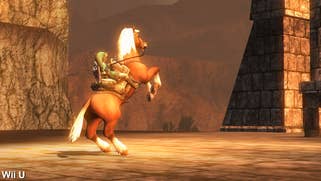
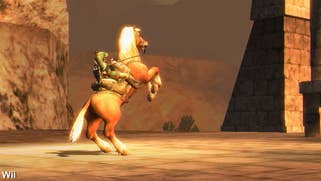


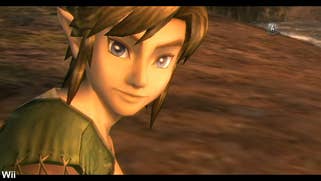

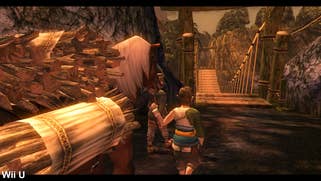
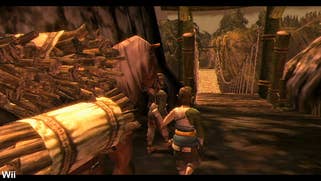

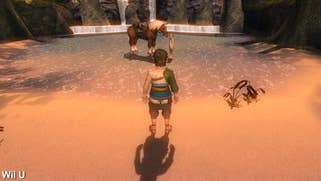
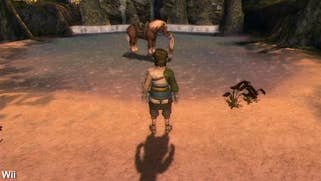
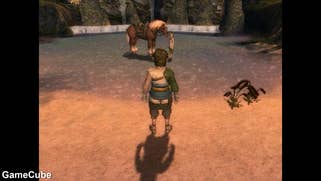
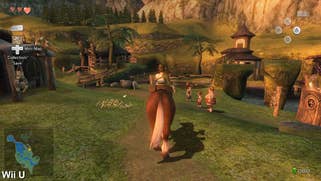
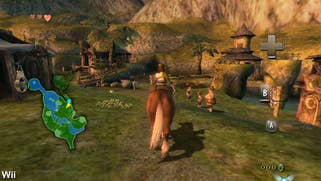
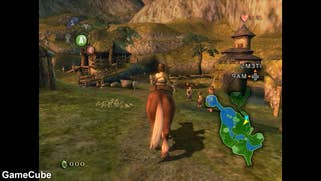
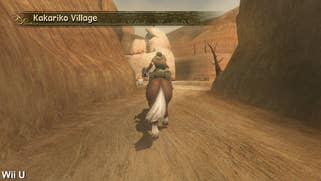


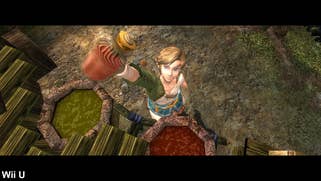


However, the same can't be said of the remaster. On Wii U the issue is simple enough to pinpoint; the alpha transparency effect used for the fog around Faron Woods (particularly after Link enters the Twilight) cause sub-30fps drops. It's an area that doesn't disturb older hardware at all - and though almost every other dungeon runs at a solid lock at 30fps on Wii U, we see unique dips to 25fps here.
Which begs the question: why does Wii U struggle in this aspect, while weaker Nintendo hardware turns in a locked 30fps? It's clear rendering at 1920x1080 takes a toll on Wii U's memory bandwidth in a way that wasn't a factor before - and we're getting a tussle for the same resources when such effects enter the frame. Even on lower-specced machines like GameCube and Wii, only targeting 640x480 gave Nintendo enough headroom to factor in alpha while targeting 30fps. On Wii U, we hit an occasional bottleneck, and it can't always draw a full 1080p frame at 33.3ms intervals for this area.
Thankfully we're looking at an exceptional case in this remaster. Frame-rates are rarely troubled, and even the rare drops we do get are permissible as a trade-off for such a sharp rise in image quality. It's an interesting side-effect of Tantalus' tinkering, but not one that lessens the enjoyment of playing Twilight Princess HD overall. And on balance, it's a more evenly optimised experience than 2013's Wind Waker HD, where navigating the seas could see more worrying drops to 20fps.
Backed by support for the GamePad's second screen (including a revamped item menu UI, map view, and shortcuts to Link's wolf mode), there's at least an attempt to factor in the Wii U's unique controller. Gone are the Wii's motion combat controls too - only leaving behind an optional gyrometer method for aiming Link's crossbow.
Otherwise a more standard control scheme is in place, and for those so inclined, Amiibo support is also factored in. On the whole, Zelda: Twilight Princess HD does everything we had hoped for in this remaster, and though there will always be some lasting 'wants', the turnout is strong enough to make a return to this game all the more compelling.
Likewise, the GameCube's catalogue has only grown more appetising with age, and we'd love to see more of its greatest make a return. Nintendo may well be biding for time with such remasters until its next, true Wii U Zelda, but it's a tactic we're happy to indulge given their quality. Time is running very short for the Wii U though, and we wonder how a similar hybrid release for Zelda might factor in an NX version too. History is at risk of repeating itself, and with the game still slated for arrival in 2016, it'll be interesting to see what form it's taken once it re-emerges.
